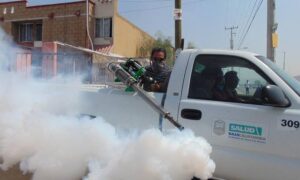Applying for jobs can feel like sending your resume into a black hole. You upload your resume, and then… silence. No response. What went wrong?
The answer often lies with Applicant Tracking Systems (ATS). These systems are used by companies to filter and sort resumes before they ever reach a human recruiter. In many cases, if your resume isn’t optimized for ATS, it may never get seen by a person.
But don’t worry—understanding how ATS works can give you the edge you need to make sure your resume gets noticed. Kallie Boxell, a seasoned recruitment director based in Dallas, Texas, has years of experience leading hiring strategies and building high-performing teams. In this guide, she shares valuable insights on how to navigate the ATS black hole and increase your chances of landing an interview.
What is an ATS?
An Applicant Tracking System (ATS) is software used by companies to manage job applications. When you apply for a job online, your resume often first goes through the ATS. The system scans your resume, looking for specific keywords that match the job description. If your resume doesn’t pass the ATS screening, it may never be seen by a recruiter or hiring manager.
Kallie Boxell explains, “ATS systems are designed to streamline the hiring process, but they can also create obstacles for candidates who don’t optimize their resumes for these systems. Understanding the ins and outs of ATS will give you a significant edge in the hiring process.”
How Does ATS Work?
ATS works by scanning resumes for specific information. The software looks for keywords, phrases, and formats that match the job description. If your resume includes those keywords, it’s more likely to be flagged as relevant, increasing your chances of being noticed.
But not all ATS systems are the same. Some are more advanced and can read resumes in different formats, while others are more basic and may only be able to read text-based resumes. Knowing which type of ATS a company uses can be tricky, but Kallie suggests focusing on the basics that will help your resume stand out in most systems.
Key Tips for Optimizing Your Resume for ATS
1. Use Simple Formatting
ATS can struggle with complex formatting. If you use graphics, unusual fonts, or tables, the system might not be able to read your resume properly. Stick to a simple, clean layout. Use standard fonts like Arial, Calibri, or Times New Roman, and avoid using headers or footers.
Kallie advises, “Keep it straightforward. You want the ATS to be able to read every word on your resume without any complications. Simplicity is key.”
2. Incorporate Keywords from the Job Description
ATS systems are designed to look for keywords that match the job description. This means that the more relevant keywords you include, the more likely your resume will be flagged as a match. These keywords can be specific skills, job titles, or qualifications mentioned in the job posting.
“When you see a job description, highlight key skills and qualifications,” Kallie suggests. “Then, make sure your resume mirrors those terms, as long as they accurately describe your experience.”
For example, if the job posting mentions “project management,” be sure to use that exact phrase if you have project management experience. But don’t overdo it—ATS systems also look for natural language, not just keyword stuffing.
3. Optimize Your Resume for Both ATS and Humans
While ATS is important, your resume will eventually be read by a human recruiter or hiring manager. That means you still need to create a resume that is easy for them to read. Keep your resume professional and visually appealing, with clear headings and bullet points.
“A resume should be easy for both the system and a recruiter to scan,” says Kallie. “If you can strike that balance, you’ll improve your chances of getting noticed.”
4. Use Standard Section Headings
ATS systems are programmed to look for specific section headings, like “Work Experience,” “Education,” and “Skills.” Using these standard headings will help ensure the system categorizes your information correctly.
Avoid using creative section titles like “My Journey” or “Skills I Rock.” Instead, stick to the basics, like “Professional Experience” or “Skills.”
5. Focus on Your Skills Section
Many ATS systems give more weight to your skills section. This is where you should list both hard skills (e.g., software proficiency, technical skills) and soft skills (e.g., communication, leadership). Make sure these skills are aligned with what the job description is asking for.
“If a job is asking for proficiency in a specific tool, like Excel or Salesforce, make sure you list it if you have experience,” Kallie recommends. “This will improve your chances of passing through the ATS and getting in front of a human.”
6. Avoid Using Headers and Footers
Some ATS systems can’t read text inside headers or footers. If you place important information, such as your contact details, in these sections, it may get overlooked. To be safe, put your contact information in the main body of the resume.
7. Use Bullet Points for Key Achievements
Instead of long paragraphs, use bullet points to highlight your key achievements and skills. ATS systems can easily read bullet points, making them more effective than dense paragraphs of text. This also makes your resume easier for human readers to scan quickly.
“Bullet points are a great way to make your resume easier to read,” Kallie adds. “They break up the text and allow you to highlight your accomplishments in a clear, digestible format.”
8. Include a Resume Summary or Objective
Adding a resume summary or objective at the top of your resume can help both ATS and human recruiters understand your qualifications quickly. This brief section should highlight your key strengths, skills, and career goals, tailored to the specific job you’re applying for.
Kallie suggests, “A strong summary that incorporates key skills and experience can set the tone for the rest of your resume. Make sure it’s relevant to the job description.”
What Happens After the ATS?
Once your resume passes the ATS, it moves on to a human recruiter or hiring manager. They will assess whether your skills, experience, and qualifications align with the job. Even if you make it past the ATS, you still need to impress with your experience and personality.
Kallie notes, “Don’t forget that ATS is just the first step. It’s your resume that will do the real selling when it gets to a recruiter. Make sure you follow up with a tailored cover letter and be prepared to shine in the interview.”
Conclusion
Getting your resume past the ATS can feel like navigating a maze, but with the right strategies, you can improve your chances. By using simple formatting, optimizing for relevant keywords, and keeping things clear and concise, you’ll ensure that your resume doesn’t get lost in the system.
As Kallie Boxell explains, “While ATS plays a critical role in today’s hiring process, it’s essential to remember that it’s only the first step. Your resume should be crafted to not only pass the system but also capture the attention of the people behind it.” By following her insights, you’ll be well on your way to standing out, getting your resume noticed, and landing that next opportunity.





























